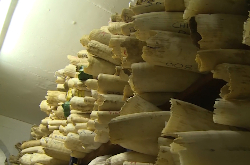짐바브웨의 상아

Zimbabwe hosted the first United Nations and Africa Union meeting on wildlife. The country is seeking permission to sell its $600-million supply of elephant ivory and rhino horns to pay for conservation programs.
In some parts of Africa, elephant populations are in decline. That is mostly because hunters shoot the animals for their valuable ivory tusks.
Officials in Zimbabwe, however, say the country’s elephant population is up to 84,000.
But some people who live near Zimbabwe's wildlife parks have different concerns. Gertrude Dube lives in a village near Hwange National Park, Zimbabwe’s biggest wildlife reserve. Her main problem is with hyenas. The animals have eaten all seven of the goats she once owned.
But elephants make life difficult too, she says. Dube said, “We love and appreciate wild animals. But some like lions and elephants are dangerous. When people hear of elephants in the area, even school children fear going to school, as they kill.”
Zimbabwe and neighboring countries Botswana and Namibia are home to over 60 percent of the world's elephants. The countries want to end the international ban on trading in unprocessed ivory. The law was created 30 years ago in hopes of protecting elephant populations.
Zimbabwean President Emmerson Mnangagwa says the country has about $600-million worth of elephant ivory and rhino horns. Most of the supply was taken from animals that died of natural causes.
Mnangagwa added that Zimbabwe supports sharing benefits from natural resources fairly “among communities living within wildlife areas.”
That would be good news for Dube and others who lose their crops and animals because of elephants and other wildlife.

